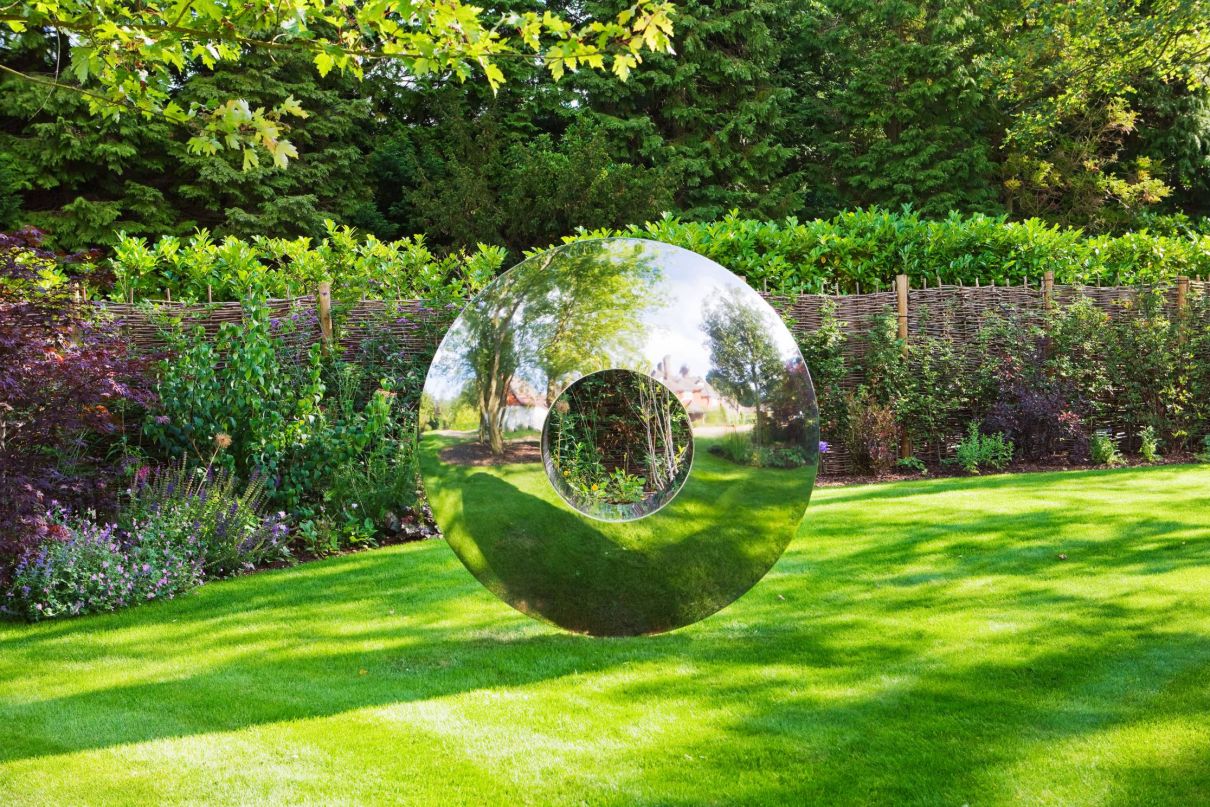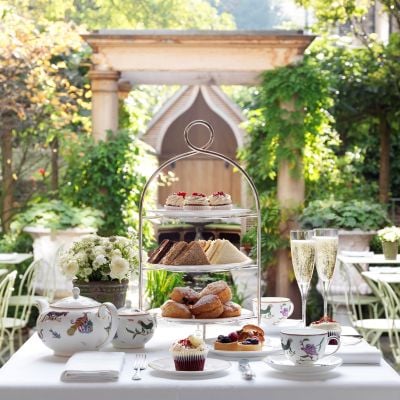Natural Healing

David Harber’s outdoor sculptures are enriching gardens around the world.

In the shadow of an Iron Age hill fort in Oxfordshire is the studio of award-winning international artist David Harber. It’s a hive of creative activity. Thirty-four employees, designers, engineers and craftsmen practice time-honoured methods to bring his designs to life.
“It’s 33 more employees than I ever expected to have,” he chuckles in his typically British, self-deprecating way. Harber came to sculpture relatively late in life, having hopscotched between careers: from being a thatcher to converting a boat into a floating theatre and touring France, for which he received an award from François Mitterand.
But 25 years ago, a twist of fate led him to create a sundial that was exhibited on a tiny ‘shoebox’ stand at Hampton Court Flower Show. He was, at this point, nearly bankrupt and describes being down to his “last £50”. But, as luck would have it, his work was spotted by British actor Jeremy Irons, who fell in love with the sundial and bought it on the spot. Harber was soon getting commissions from other British entertainment icons such as Dame Judi Dench and George Michael, and, later, Oxford colleges, billionaires and royalty from all over the globe. He has been given an award by the Queen, which he cites as his proudest feat, after his four daughters.
“It was Jeremy Irons who said that day, ‘you’ve got something here, you must pursue it, don’t give up’. Which was lovely to hear when you’re not sure if you’ll be able to put cornflakes on the table for your daughter next week.”

One thing led to another and Harber was given a spot at the RHS Chelsea Flower Show, considered the most prestigious flower show in the world. He has exhibited his work every year for 23 years since and is now known the world over for his innovative and appealing sculptures, sundials and water features.
Each commission is hand-made at his workshop in Oxfordshire, using materials such as copper, bronze, stainless steel and stone. Now in his early 60s, he continues to have a hands-on approach, particularly with bespoke commissions, from attending initial site viewings, designing and manufacturing in the workshop right through to the installation. He says his wife Sophie is the inspiration and driving force behind everything he does.
Harber takes a sustainable approach to his work. “We want generations and generations to be able to enjoy it.” His lightbulb moment came when he was restoring an ancient sundial many years ago. After cleaning it he managed to pick out some details such as the name of the maker and the date: 1554. “This thing had been there fulfilling a function for around 500 years. At that moment, I decided we only ever wanted to make pieces that lasted 500 years or more, and that informed the materials and techniques we’ve used ever since.”
His inspiration comes from reflecting nature to enhance and pay homage it. Synonymous with elegance and simplicity, Harber’s designs reflect light, water and greenery to create dramatic focal points in exterior settings. He hopes people will feel “nurtured” when they see his work. Many of his clients are financiers living in cities who buy sculptures for their gardens. “If you’re a frazzled banker and you come home to your garden, it should have a nurturing element, it should re-energise you.”

At this year’s RHS Chelsea Flower Show, Harber partnered with celebrated garden designer Andrew Duff and real-estate agency Savills to create a beautiful wild garden. The idea was to celebrate the environmental benefit and beauty of trees, plants and grass in urban spaces, endorsed by the Environmental Change Institute, part of Oxford University.
Using predominantly native planting, the garden featured 18 mature trees and a meadow interplanted with 10,000 plant species. A key feature was a central pool of water that featured Harber’s sculpture, a 3.5m shard inspired by the surrounding woodland setting. “It resembles a shadow of ‘leaves’ fluttering on the surface of the water, designed to play with light and create beautiful dappled patterns across the pond,” he says.
“It supports the message of sustainability and mirrors the garden’s ethos, providing respite and calm in an urban environment. It’s about serenity for the human soul.”
This article originally appeared in Billionaire's Art Issue, June 2019. To subscribe contact








